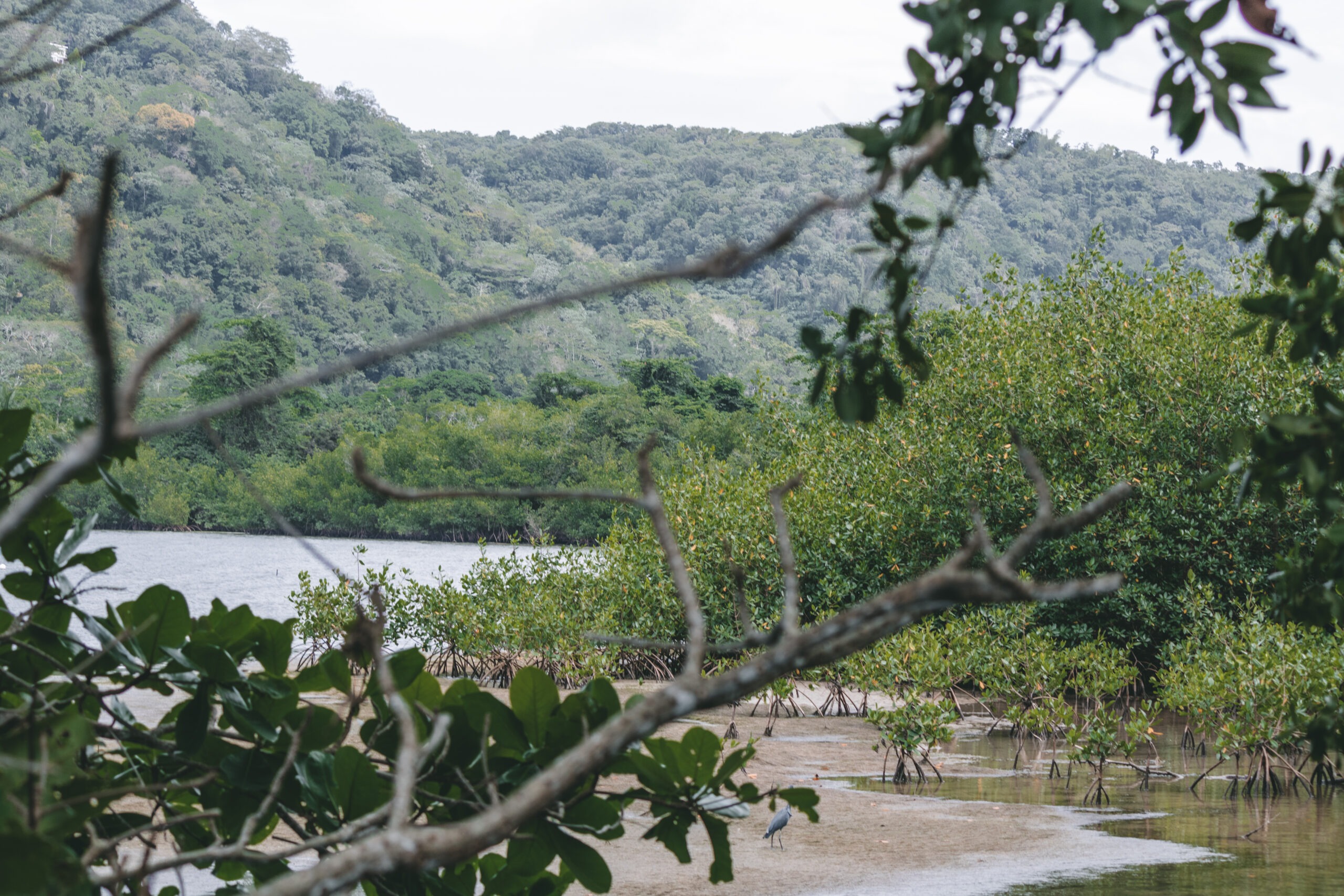
This story was supported by the Pulitzer Center.
Jamaica’s critical mangrove forests are facing a range of threats, caused or exacerbated by climate change.
Mangroves are essential for tropical countries like Jamaica, but they can provide the same security in any place they grow. They are trees with dense, interwoven root systems that grow along warmer coastal regions in slow-moving water. They protect coastlines from tidal waves and flooding and are natural habitats for a variety of marine life. Besides acting as a natural buffer and habitat protection for multiple ecosystems, mangroves are becoming a key part of the global climate change conversation because of their ability to sequester carbon.
Jamaica: A Case Study
Roughly 12 minutes out of Jamaica’s Port Antonio is a small community called Alligator Head. As with most communities along Jamaica’s north coast, fishing is an essential tradition that has been passed down for generations; it’s a common stream of income for both men and women. But things have changed—the climate being one of them.
In recent decades, Jamaica has faced issues such as coastal erosion, sea surface temperature rise, sea level rise, reef disease, and fish stock decline. The result: fewer fish, receding beaches, and a general decline in the fishing profession as well as other coastal livelihoods. People who years ago could earn a living fishing for a few hours on the coast, now must go further and deeper into the ocean to catch fish. Many have left the profession altogether. But in 2016, a group of marine scientists and conservation managers collaborated with the community of Alligator Head to establish the East Portland Fishing Sanctuary, with the goal of restoring the island’s coast.
When a mangrove forest is removed, which happens often in Jamaica, the land loses a critical storm barrier. In nearshore waters, biomass—organic material that comes from plants and animals—also declines when coral reefs no longer have the protection of mangroves. This is because the habitats of these ecosystems, once protected by the mangroves, are now gone.
Mangroves naturally sequester carbon and store it in their roots and branches, locking it in the soil for years. Measured annually, mangrove forests sequester carbon 10 times faster than mature tropical forests. This makes them extra-valuable in the newly emerging carbon credits market. The coastal protection services of Jamaican mangroves, in particular, are estimated to be worth over $32.7 million. Although too early to probe, the carbon market could also prove to be a viable economic opportunity for conservation nonprofits and coastal communities like Alligator Head.
The foundation employs fishermen as sanctuary wardens, which serves as a nursery for not just fish but also the island’s most unique forest—mangroves.
A Foundation Responds
The Alligator Head Foundation, located near the island’s northeast coast, has been working to restore approximately a third of the country’s mangrove forests. Despite challenges, including financing, the Alligator Head Foundation is spearheading mangrove education programs, restoring the livelihoods of fishers, and hoping for greater support from the recent launch of the Mangrove Breakthrough—a global call to action launched at last year’s COP27 aimed at protecting and restoring mangroves at scale.
Today, the Alligator Head Foundation, which manages the sanctuary, is situated right in the middle of this 62-square-kilometer marvel. The foundation employs fishers as wardens of the sanctuary, which serves as a nursery for not just fish but also the island’s most unique forest—mangroves. Through their own mangrove nursery and other programs, the Alligator Head Foundation has been a key champion for mangrove conservation in Jamaica.

Reshaping the Community Fishing Trade
On the frontline of Jamaica’s coastal degradation are fishers, who experience the impacts of climate change not just on land but also in the ocean. Weston Panton, fisherman and sanctuary warden, saw the decline of marine life in the area in the late 2000s. At that time, Panton fished but also supported himself as a waiter and bartender. Eventually, he moved to St. Ann, a parish on the northern end of the island, to work. Panton also recalls many young people leaving Alligator Head as well to find work elsewhere as the fishing trade was no longer sustainable. The decline in fish, coral reefs, and shorelines started a forced migration of sorts, as many traditions and livelihoods were at risk.
The familiarity of Alligator Head eventually brought Panton back home after he gave up his job as a chef in the city. Using his old skills on the water, Panton began to generate income and became curious when he heard of the newly established East Portland Fishing Sanctuary. This eventually led him to expand his fishing portfolio and obtain various licenses, which made him eligible to become a warden at the sanctuary. As a warden, he assists the foundation with patrolling and maintaining its restoration programs. Panton’s story is not unlike others in the community. The Alligator Head Foundation is providing a vital space where fishers can trade their expertise and be in service of the environment—all while earning a sustainable living.
“[The youth] are actually taking the information home with them and sharing it with family. So, in educating the youth, we’re also educating at a familial level.”It’s not just the fishers that are coming back to Alligator Head, it’s also the fish. Denise Henry, the foundation’s research program manager, reveals that their recent reef survey shows a slow but steady increase in returning fish populations. “We’re seeing species that haven’t been seen in years. We’re seeing sharks, [and] our turtle population has increased.” The reef data, although not published yet, shows a general increase in biomass in sanctuary waters.
Sign up for our free newsletters
Subscribe to NPQ's newsletters to have our top stories delivered directly to your inbox.
By signing up, you agree to our privacy policy and terms of use, and to receive messages from NPQ and our partners.
The Future of Mangrove Restoration
The mangrove nursery eventually caught the eye of the Khaled bin Sultan Living Oceans Foundation, a marine science and ocean conservancy organization. It partnered with Alligator Head Foundation to create a new pilot program called Jamaica Awareness of Mangroves In Nature (JAMIN), which aims to educate Jamaican secondary school students about the importance of mangrove forests.
The JAMIN program was developed in 2014 and initially targeted university students, academics, and other researchers. But it expanded to secondary schoolers in the years after. The premise of this education program is that it reaches a more receptive target: children. Translating conservation and environmental advocacy into something adults find worth sharing can be difficult. “[The youth] are actually taking the information home with them and sharing it with family. So, in educating the youth, we’re also educating at a familial level,” said Amy Heemsoth, director of education at the Khaled bin Sultan Living Oceans Foundation.
Despite the Alligator Head Foundation’s achievements, funding remains a major issue. But mangrove restoration has recently become a focus in the global climate change conversation. At last year’s COP27, the UN established the Mangrove Breakthrough, which aims to catalyze financial support for mangrove restoration solutions projects. Globally, the ecological value of mangrove forests is becoming more recognized, but solutions like nurseries and replanting still struggle to gain momentum. The hope is that the Alligator Head Foundation can access the support of the Breakthrough to continue this critical work to help Jamaica successfully build resilience and adapt to climate change.












